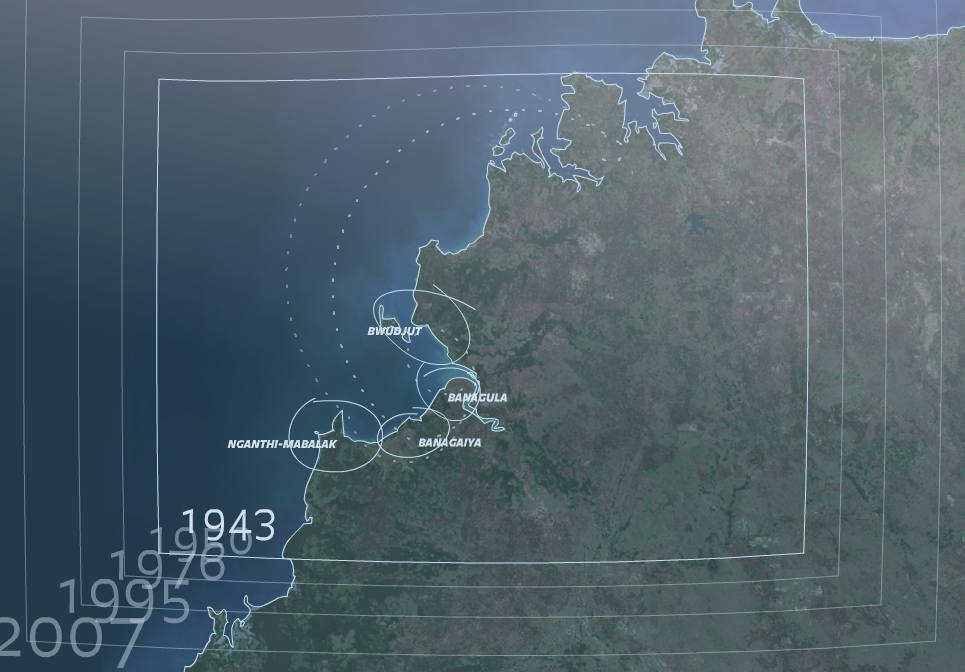I would like to thank The National Archives of Australia, the Northern Territory Libraries Services, the Pattemore Family and Linda Davis for permissions to use images from their archives
- Elizabeth Povinelli, Project Credits
Alternative views of Digital Futures project data:
 All info and conversations from this project page
All info and conversations from this project page
http://vectors.usc.edu/xml/projects/digital_futures_v1.xml
 RSS feed of the conversations from this project page
RSS feed of the conversations from this project page
http://vectors.usc.edu/rss/project.rss.php?project=90
 List of project data XML feeds that drive Digital Futures
List of project data XML feeds that drive Digital Futures
http://vectors.usc.edu/issues/06_issue/povinelli/xml/index.rdf
http://vectors.usc.edu/xml/projects/digital_futures_v1.xml
http://vectors.usc.edu/rss/project.rss.php?project=90
http://vectors.usc.edu/issues/06_issue/povinelli/xml/index.rdf
Designer's Statement
In December of last year, I huddled with Beth around her MacBook in a busy cafe in the West Village. She showed me the wealth of photographs, audio recordings and other archival materials she has gathered over her decades-long work with aboriginal tribes in northern Australia. She showed me published accounts of 'dreamings,' tribal origin stories that tie people to the land. We played with Google maps together and talked about the trope of 'zooming in'—what it might mean to 'get closer to a place' through a digital interface. We discussed the idea of using computer code to illustrate the gates of access that other post-colonial digital archives have used to try to replicate social structures of the cultures they represent. We talked about linking the archive content with statistics about aboriginal health, poverty, education to drive the argument that an archive can be a vehicle for social obligation and responsibility.Over the course of several months the piece began slowly to take shape. Ruby Yarrowin became the main character, and her path through the region over the course of her life became an organizing framework. The contextual statistics about aboriginal health and welfare were woven together with video interviews, audio recordings, archival photographs, and other source material into short video narratives found at each place and time in the project's interface. Some ideas, such as including interactive genealogies or requiring the user to fill out surveys about their own economic and social status on entry, fell to the wayside as the project became a more focused narrative piece. This meant that Beth could focus on building her argument through the multi-layered video pieces that appear at each site, almost as a painter works: a few brush strokes here and there, gradually filling in the canvas to create an overall image. As she created the videos and added them into the database, the map interface steadily took form, a complex picture of people, places, and social conditions.
My hope is that this project can begin to bridge the gap of physical distance, time, and bandwidth that separates the audience from the people and places introduced within. By following the threads and stories, visitors to the project can start to see the connections of personal relationships and responsibility around people Beth knows and cares about deeply.
— Peter Cho, May 19th, 2008


